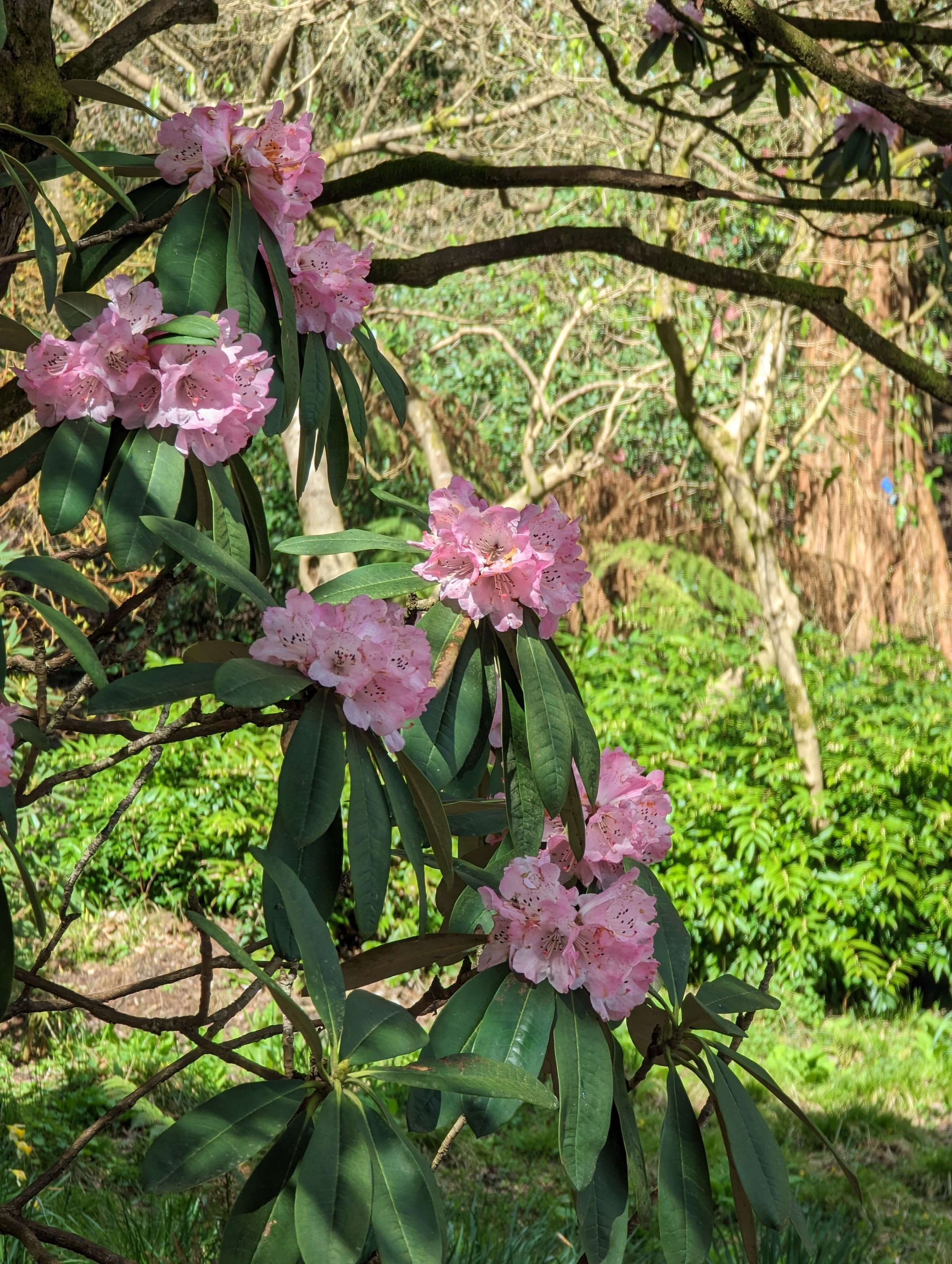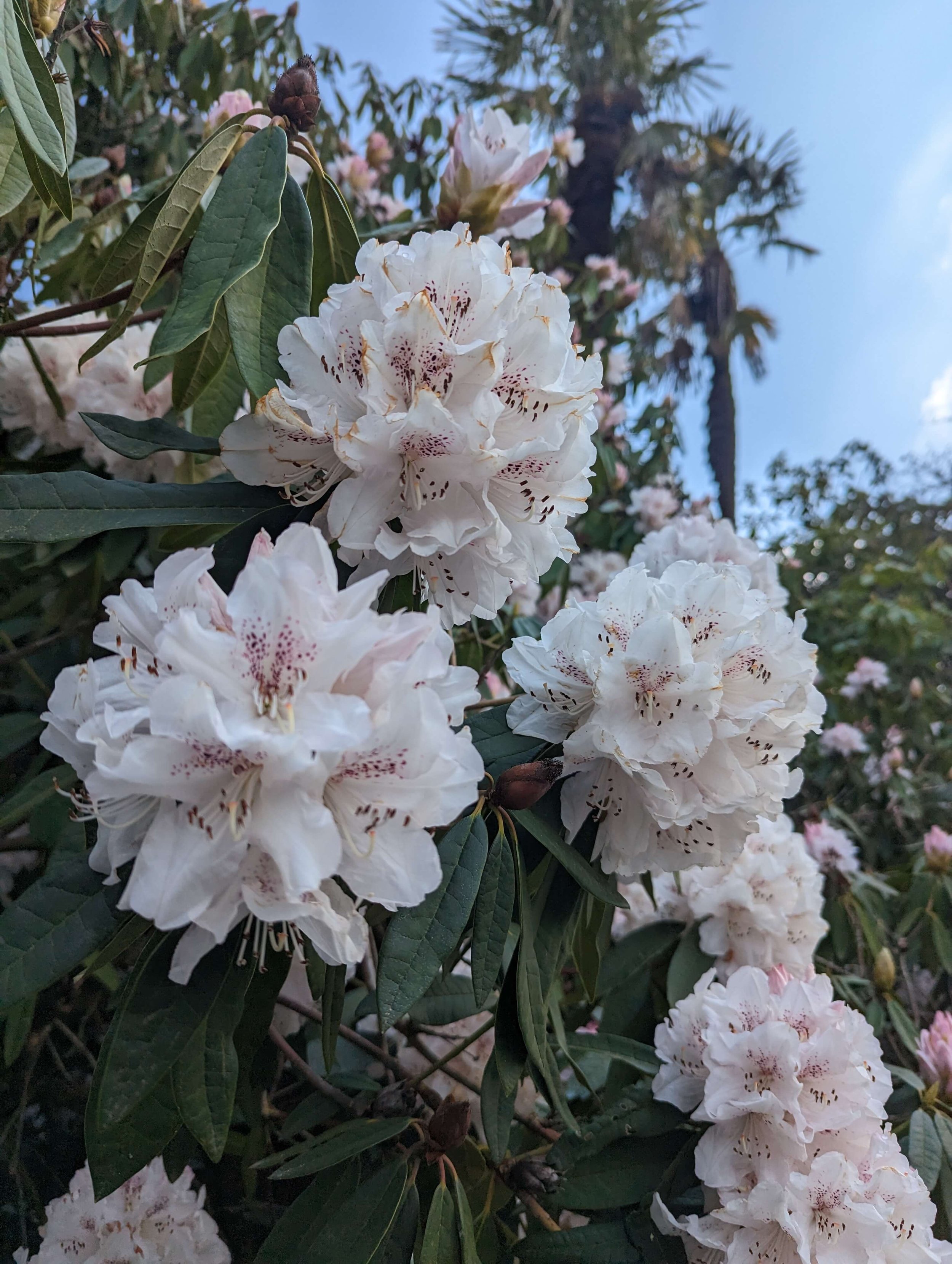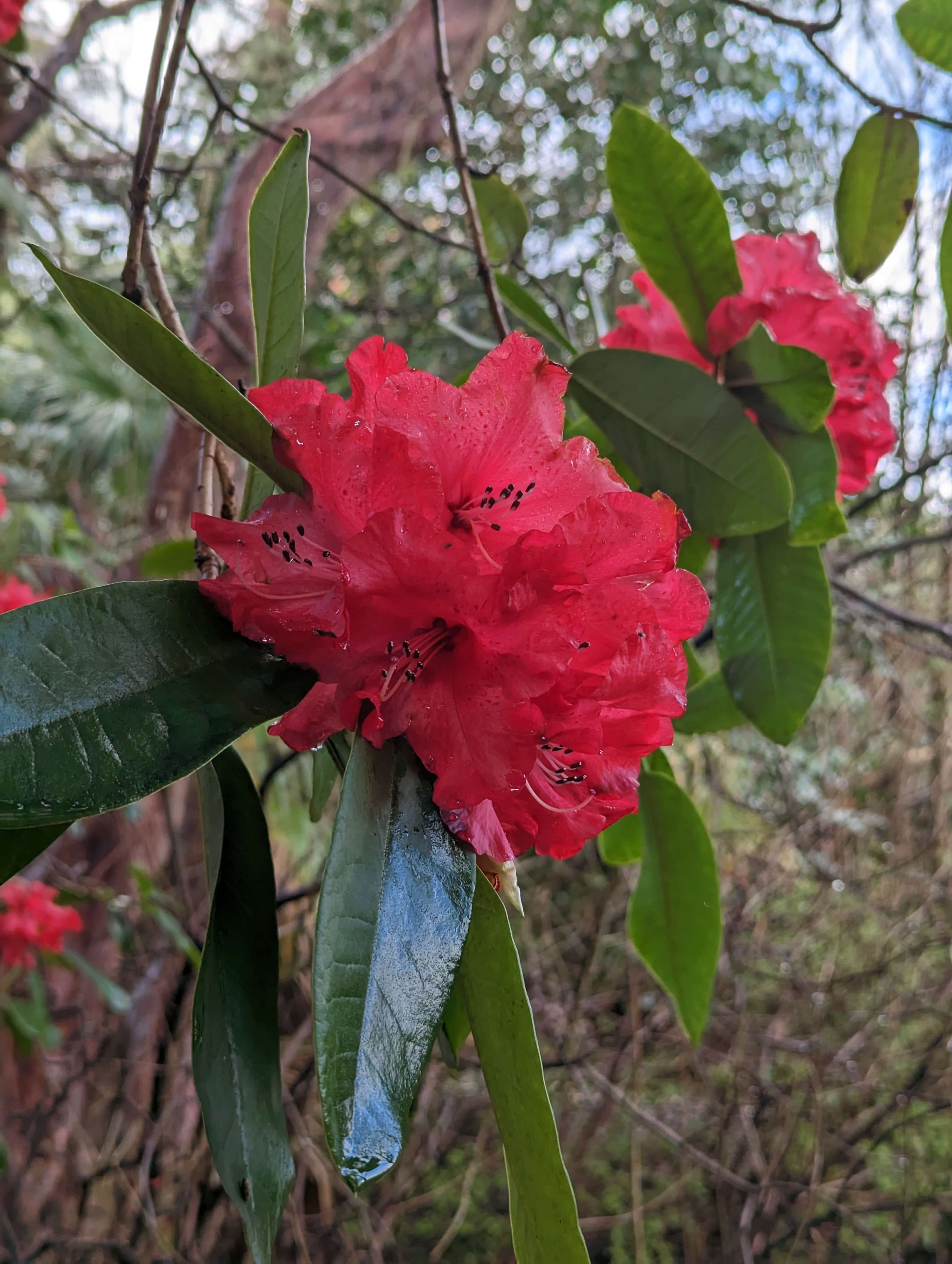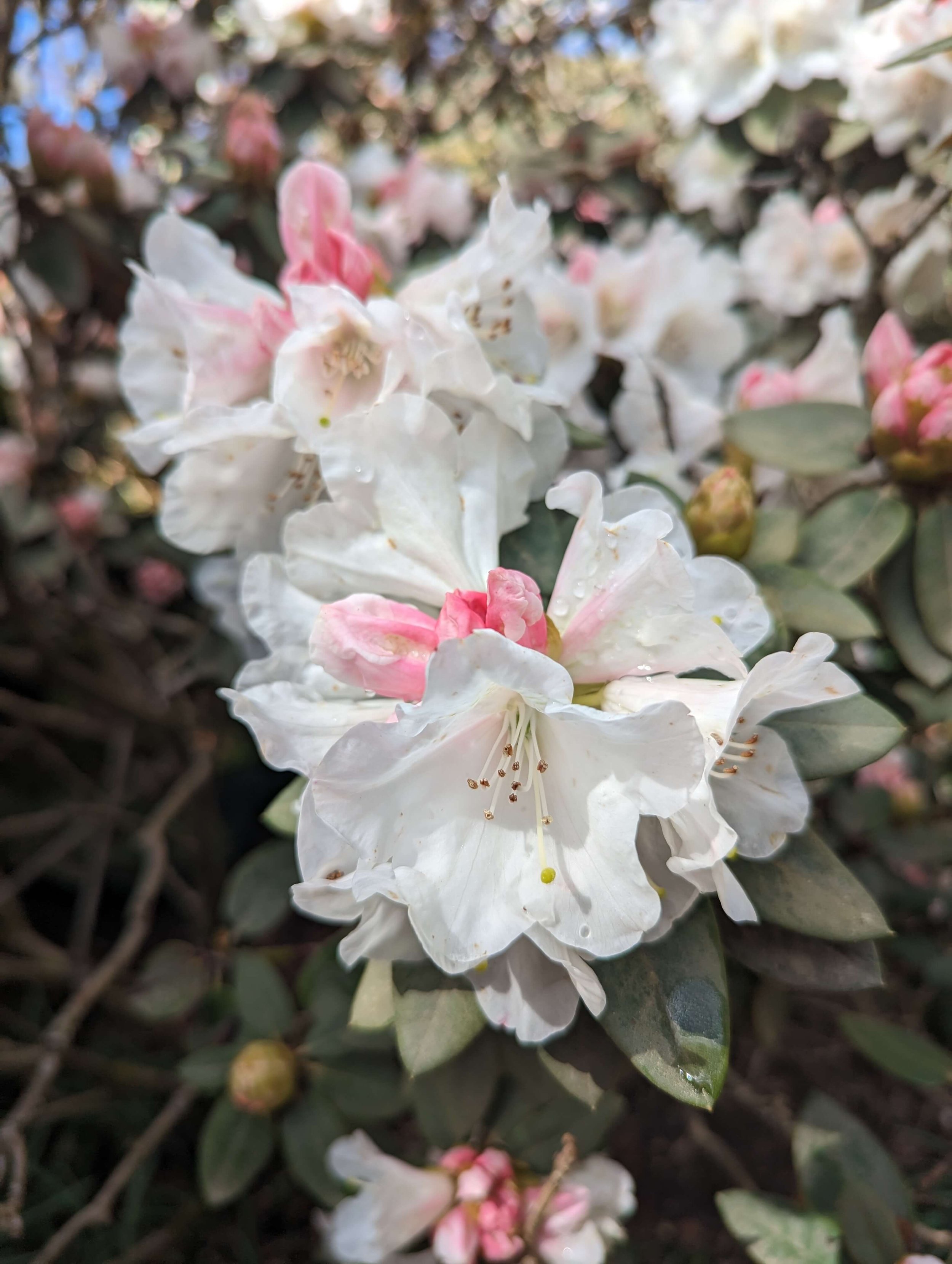Rhododendron Rhapsody: A Blossoming Love Affair with Your Garden
In the seventh episode of the 'Growing Leonardslee' podcast, general manager Adam Streeter delves into the fascinating world of rhododendrons at Leonardslee Gardens. He engages in another lively discussion with head gardener Jamie Harris about growing these beautiful plants in a personal garden space.
Adam shares his own interest in learning more about rhododendrons and creating a small Leonardslee-like garden in his own garden. The conversation focuses on providing tips and advice to people who may be inspired by the beauty of Leonardslee Gardens and are considering growing rhododendrons in their own gardens.
Jamie explains that rhododendrons are not native to the UK, but they offer a unique, exotic, and spectacular display in any garden. They usually bloom in spring, which sets them apart from the typical English summer garden. Rhododendrons are perennials, so they don't die back, and most are evergreen, providing garden interest all year round. Many of these plants are also scented.
Rhododendrons can serve as focal points in gardens, drawing the eye around a space or acting as signature plants. Jamie also mentions that some rhododendrons, dwarf varieties, can be grown in pots or on balconies for those who don't have a garden.
Although the rhododendrons at Leonardslee Lakes & Gardens might seem like giants and unattainable, Jamie assures listeners that it is entirely possible to grow these beautiful plants at home. The podcast aims to share tips and advice to help people achieve the best-looking garden possible, even on a smaller scale.
Enhancing Your Garden: Tips for Planting and Care
Rhododendrons have become a popular choice for garden enthusiasts who wish to transform their outdoor spaces into miniature versions of the picturesque Leonardslee Lakes & Gardens. However, before embarking on this journey, it is crucial to understand the unique requirements of rhododendrons to ensure their successful growth and longevity.
Firstly, rhododendrons may not necessarily thrive in every spot. One of the key factors that contribute to their successful growth is the soil. Rhododendrons require acidic, ericaceous soil to truly flourish. Soil acidity is measured on the pH scale, ranging from 0 to 14, with 7 being neutral, and lower numbers indicating increased acidity. Garden centres, such as the one at Leonardslee, offer simple pH tests to help determine the soil's acidity level.
Once the soil is determined to be acidic, it is essential to consider the amount of sunlight the plant will receive. Although some dwarf Alpine species can tolerate full sun, most rhododendrons prefer dappled shade. It is also crucial to provide sheltered conditions, as these plants do not fare well in scorching winds or exposed areas. This preference for sheltered valleys contributes to their thriving growth at Leonardslee Lakes & Gardens.
When planting rhododendrons, avoid placing them too deeply in the soil, as they are surface-rooting plants. Instead, provide a little bit of soil on top of their roots to ensure their health. This principle applies to many other plants, such as apple trees.
After planting the rhododendron, it is advisable to apply a layer of mulch around the plant. Mulch, which consists of organic matter placed on the soil surface, should preferably be derived from an acidic plant like a conifer or bracken. This mulch not only adds an aesthetic appeal to the garden but also provides various benefits for the plant, such as suppressing weeds, retaining moisture, and encouraging worm activity, which in turn improves soil structure.
Watering, Pruning, and Feeding Tips
Rhododendrons are beautiful, low-maintenance plants. However, to ensure their healthy growth and longevity, it is essential to understand their care requirements.
Watering is a crucial aspect of rhododendron care. While these plants do not require constant watering like a newborn baby, they do need to be kept consistently moist. The best time to plant rhododendrons is during autumn or spring, as the soil will be sufficiently warm and moist during these seasons.
Rhododendrons grow best in areas with high rainfall, which is why some gardens, such as RHS Wisley, are considering relocating their rhododendrons to northern gardens with higher precipitation. When watering these plants, it is preferable to use rainwater rather than tap water, as it is better for both the plant and the environment.
When it comes to pruning, young rhododendrons typically require little maintenance. In the first few years, pruning is unnecessary unless dead, diseased, or damaged wood needs to be removed. As the plant matures, pruning may be necessary to control its size. Most rhododendrons respond well to hard cutting back, with the exception of smooth-barked species that will not flower again after such pruning. After a hard prune, it is essential to feed and mulch the plant to aid in its recovery, as the pruning process can be stressful.
Feeding rhododendrons is not as demanding as feeding roses, which require constant attention throughout the summer. Instead, a general-purpose fertiliser can be applied once a year, preferably in the spring. If the soil is not acidic enough for the plant, ericaceous feeds containing iron can be used to improve the soil's acidity. By ensuring that the soil is acidic and providing adequate nutrients, rhododendrons will be more likely to flourish.
The Benefits and Challenges of Growing Rhododendrons
One of the significant advantages of growing rhododendrons is their low-maintenance nature. Unlike some other plants that require constant tending, deadheading, and staking, rhododendrons can thrive with minimal intervention as long as they receive proper watering and annual feeding. This makes them an ideal choice for gardeners who want maximum visual impact with minimal effort.
Despite their hardy nature, rhododendrons can still encounter issues related to pests and diseases. One such challenge is drought conditions, which may cause flower buds to form improperly during the next season. Established plants can usually cope with these conditions, but younger specimens may require emergency watering to ensure proper growth. Additionally, if exposed to extreme wind or cold, rhododendron leaves may become scorched, temporarily detracting from their visual appeal.
Chlorosis, a condition characterised by yellow leaves, may also occur if the soil lacks proper nutrients. However, this issue can be addressed through regular feeding and mulching, resulting in healthier plants. While rhododendrons are generally resistant to pests, they can still be affected by honey fungus, bad blast, scale insects, and vine weevils. Maintaining a healthy plant is crucial for preventing such infestations.
One of the most significant threats to rhododendrons is Phytophthora ramorum also known as sudden oak death. This disease has decimated large plantations of larch in various countries, and Rhododendron ponticum serves as a vector for its spread via spores. To mitigate this risk, gardeners must diligently monitor their plants and remove any fallen leaves that may harbour spores. Maintaining general garden hygiene, such as cleaning boots and pet fur, can also help prevent the spread of Phytophthora.
Healthy Rhododendron Growth: From Plant Purchasing to Propagation
Rhododendrons are beautiful and versatile additions to any garden. However, to ensure their healthy growth and longevity, it is essential to understand the potential challenges that may arise from purchasing plants to propagate them.
When visiting gardens, it is advisable to avoid wearing the same boots when tending to your own plants to prevent the spread of diseases. This may seem excessive, but many professional gardeners, such as those at Leonardslee, follow this practice to protect their valuable national collections and historic plants. Home gardeners should adopt similar habits to maintain the health of their rhododendrons.
When purchasing rhododendron plants, it is crucial to buy from reputable nurseries to minimise the risk of introducing diseases or pests into your garden. Some gardens, like Leonardslee, have the luxury of a quarantine area where newly acquired plants can be monitored for up to six weeks before being integrated into the main garden.
While most home gardeners do not have access to a quarantine space, they can still take precautions by closely inspecting new plants before planting them in their gardens.
An interesting connection between plant care and the COVID-19 pandemic is the use of PCR tests for detecting Phytophthora, a disease that affects rhododendrons. These tests function similarly to COVID-19 tests and are a valuable tool for maintaining plant health.
For those interested in propagating their rhododendrons, there are several methods available, ranging from simple seed-saving techniques to more advanced processes like layering and grafting. Many people are familiar with sowing seeds on their windowsills, but rhododendrons may require more involved techniques.
The story of Leonardslee is deeply connected to breeding and crossbreeding rhododendrons, demonstrating the importance of propagation in preserving these beautiful plants.
In conclusion, ensuring the healthy growth of rhododendrons in your garden requires attention to proper plant sourcing, monitoring, and propagation techniques.
By adopting responsible practices, such as wearing clean footwear and purchasing plants from reputable sources, gardeners can minimise the risk of introducing pests and diseases to their rhododendrons.
Additionally, exploring various propagation methods can lead to an even more diverse and vibrant garden, showcasing the beauty and versatility of these stunning plants.






